Abstract
Three individuals who exhibited self-injurious behavior (SIB) were exposed to sensory-integrative therapy. Prior to treatment, a functional analysis baseline was conducted to identify the motivational features of their SIB. One subject's SIB appeared to be an attention-getting response (maintained by positive reinforcement), which varied subsequently as a function of attention being either withheld or provided noncontingently during sensory-integration sessions. The 2nd subject displayed a pattern of responding suggestive of stereotypic SIB (maintained by automatic reinforcement), which paradoxically increased during sensory-integration sessions. The 3rd subject's SIB appeared to function as an escape response (maintained by negative reinforcement), and his behavior during sensory-integration sessions was similar to that observed during baseline sessions in which demands were not present. The SIB of all 3 subjects later was reduced when behavior interventions were applied. The data presented raise questions about the active components of sensory-integrative therapy and the functional types of SIB for which it might be appropriate.
Full text
PDF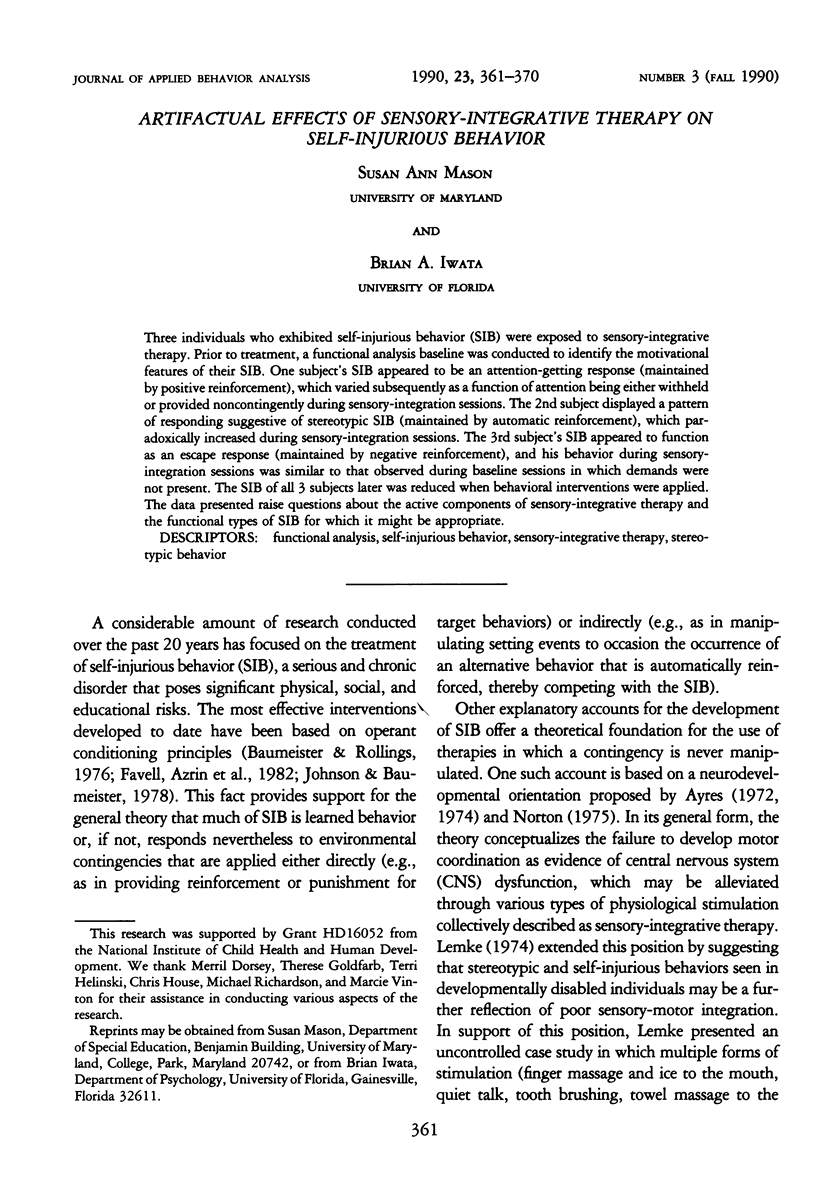
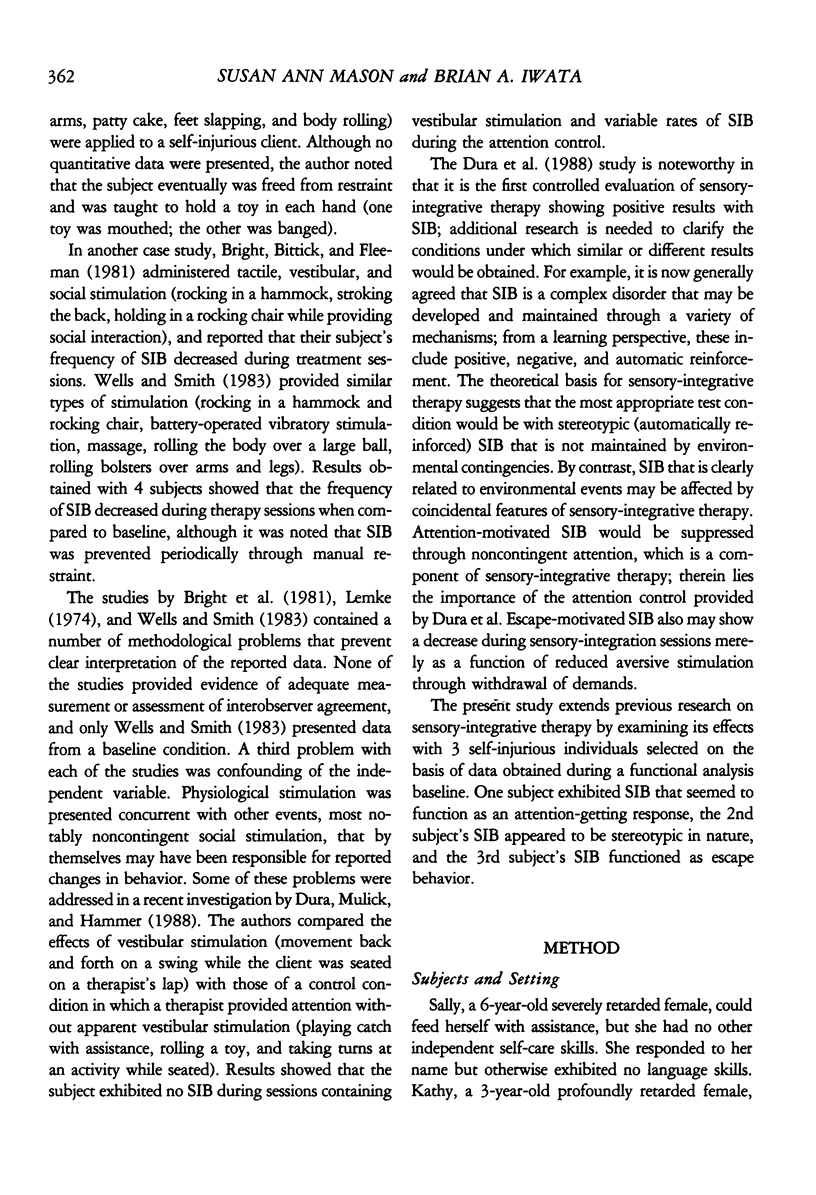

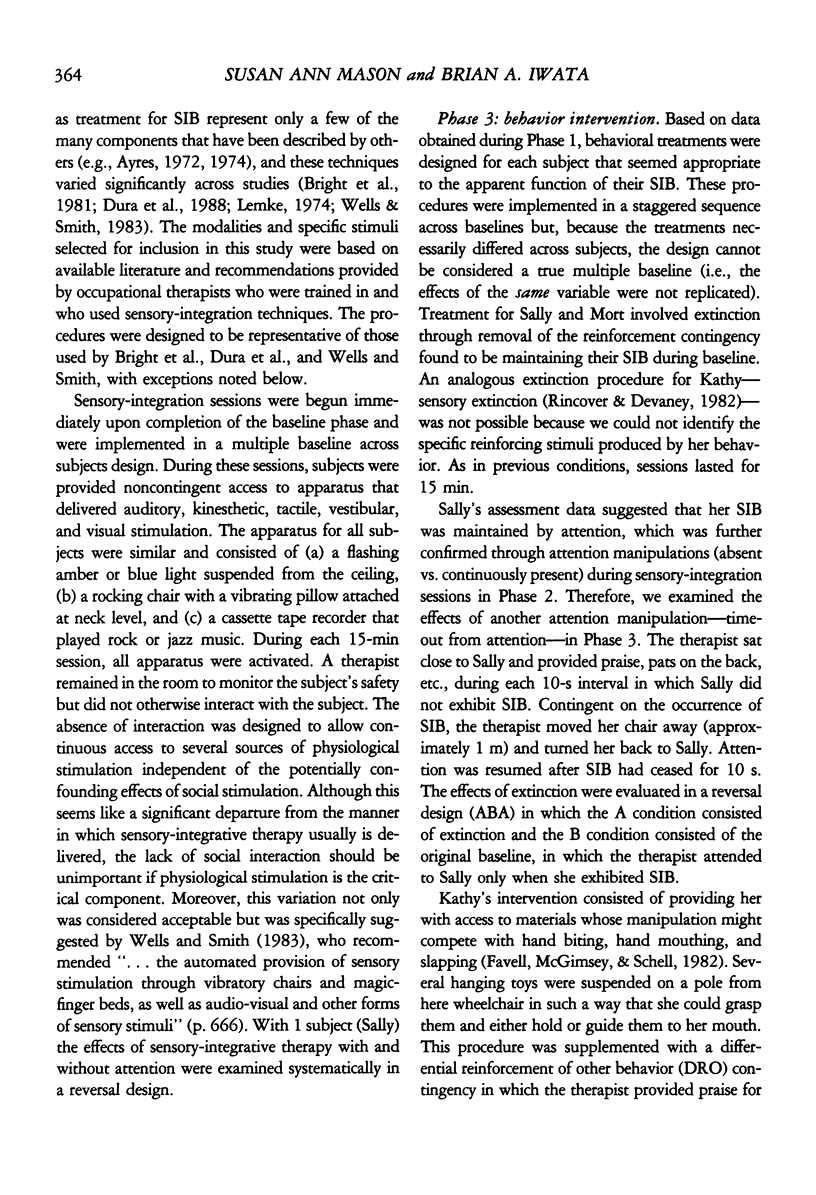
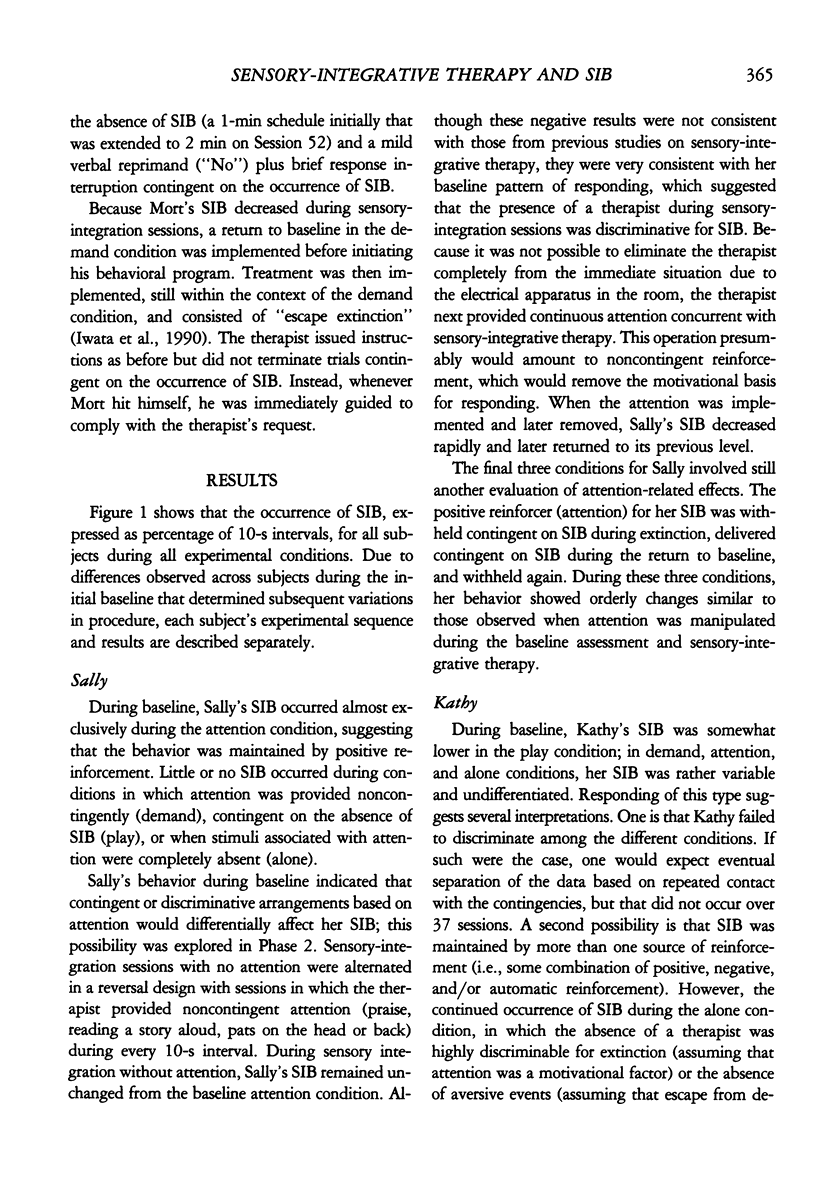
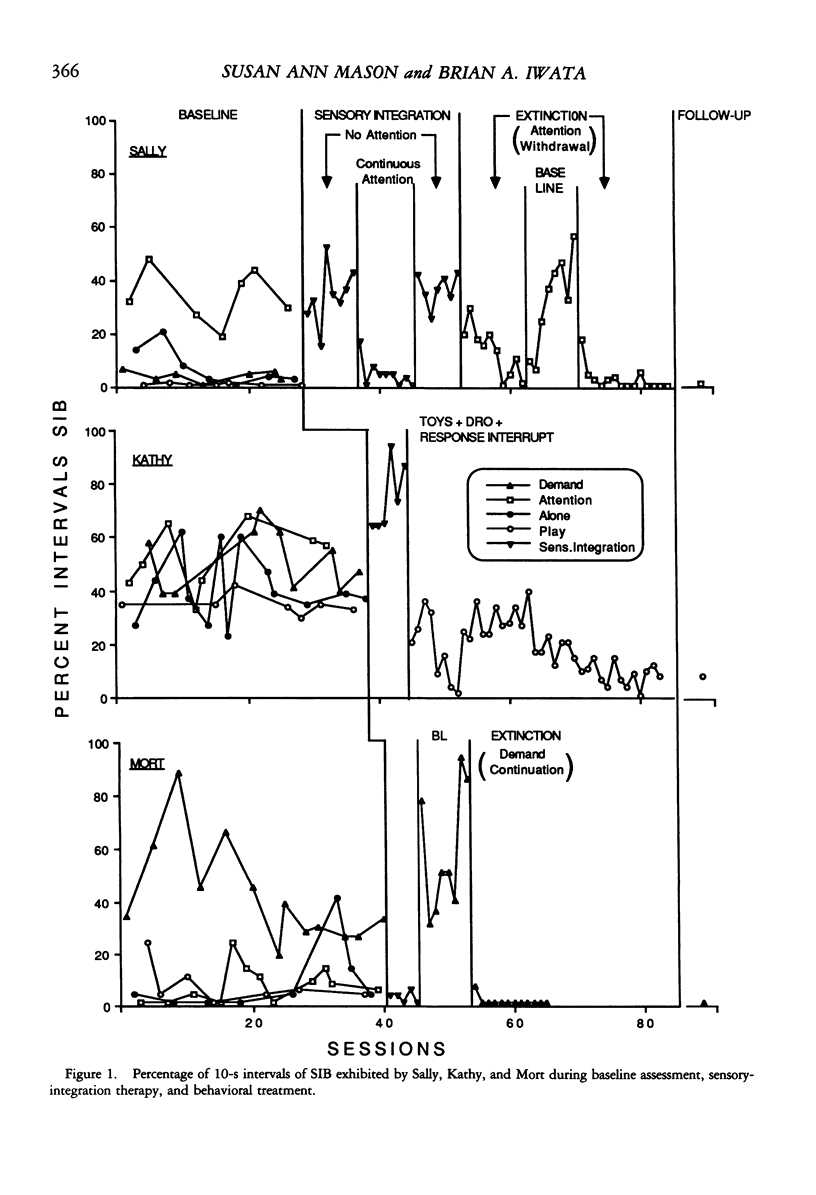
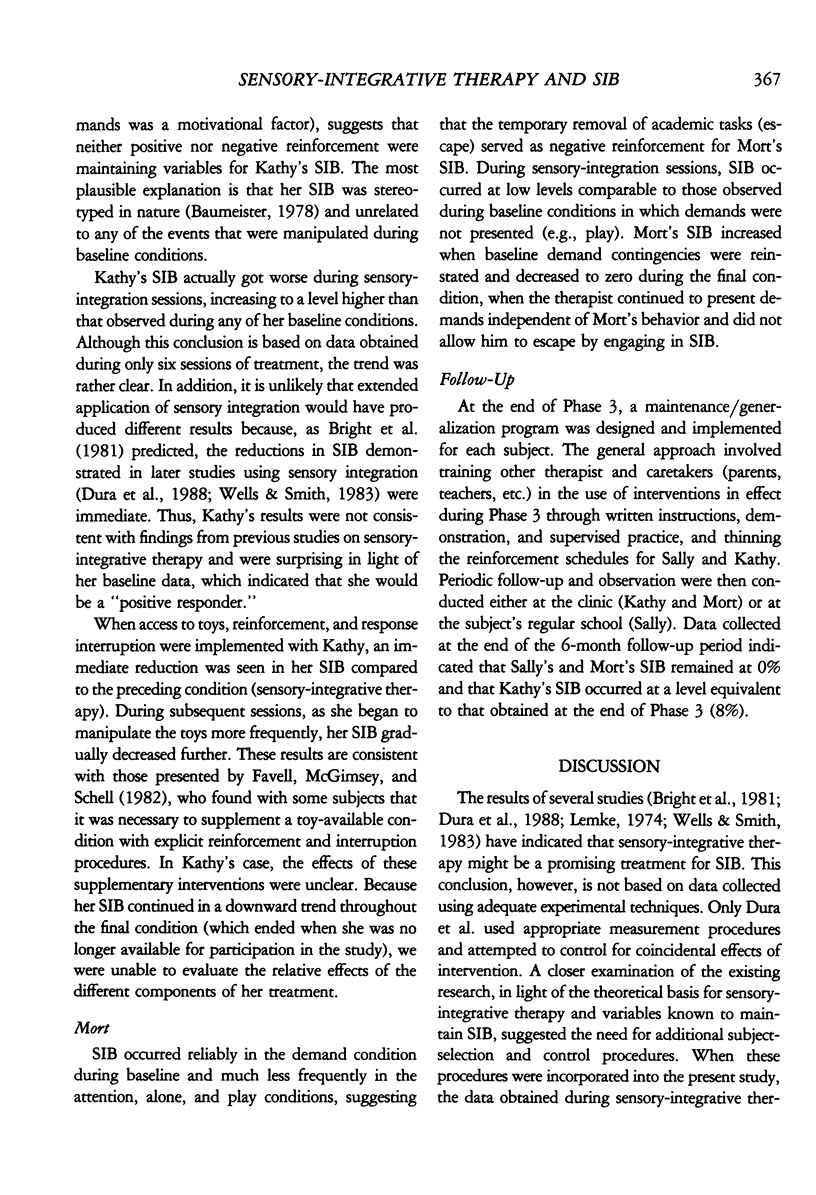
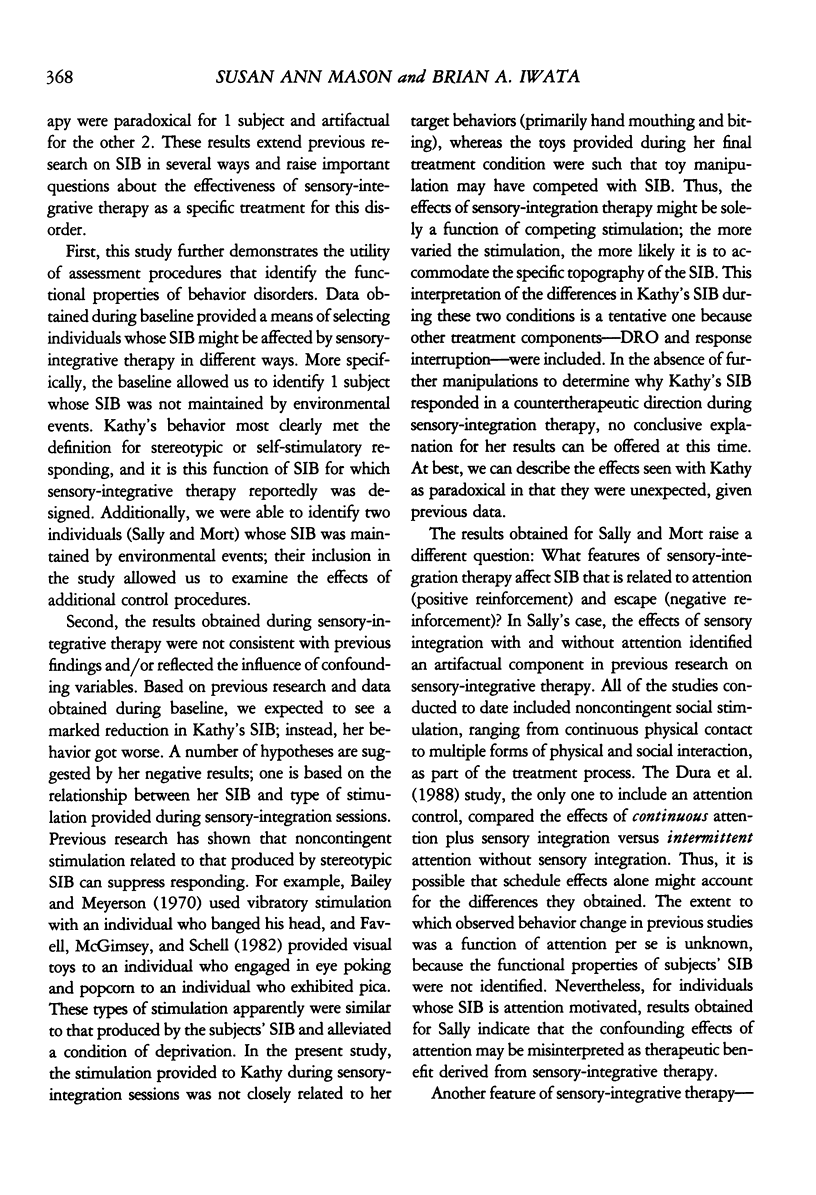
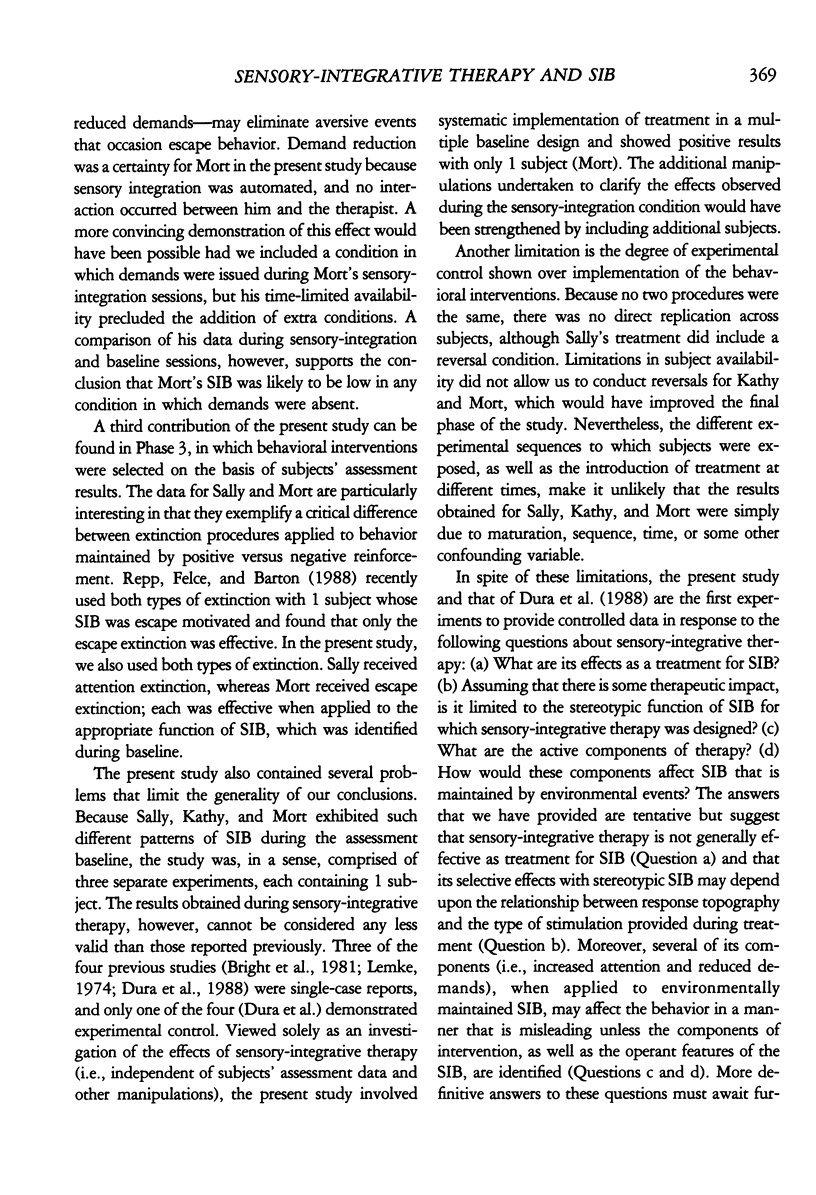
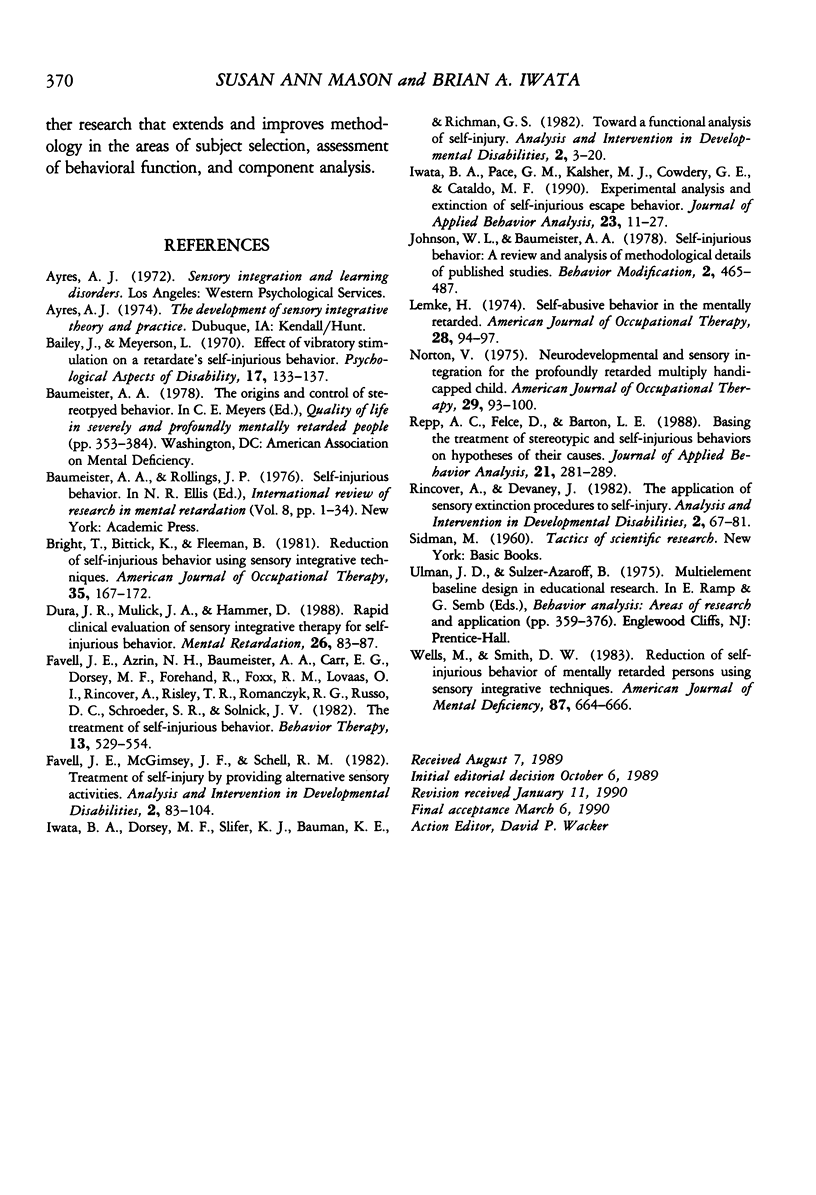
Selected References
These references are in PubMed. This may not be the complete list of references from this article.
- Bright T., Bittick K., Fleeman B. Reduction of self-injurious behavior using sensory integrative techniques. Am J Occup Ther. 1981 Mar;35(3):167–172. doi: 10.5014/ajot.35.3.167. [DOI] [PubMed] [Google Scholar]
- Dura J. R., Mulick J. A., Hammer D. Rapid clinical evaluation of sensory integrative therapy for self-injurious behavior. Ment Retard. 1988 Apr;26(2):83–87. [PubMed] [Google Scholar]
- Iwata B. A., Pace G. M., Kalsher M. J., Cowdery G. E., Cataldo M. F. Experimental analysis and extinction of self-injurious escape behavior. J Appl Behav Anal. 1990 Spring;23(1):11–27. doi: 10.1901/jaba.1990.23-11. [DOI] [PMC free article] [PubMed] [Google Scholar]
- Lemke H. Self-abusive behavior in the mentally retarded. Am J Occup Ther. 1974 Feb;28(2):94–98. [PubMed] [Google Scholar]
- Norton Y. Neurodevelopment and sensory integration. Am J Occup Ther. 1975 Feb;29(2):93–100. [PubMed] [Google Scholar]
- Repp A. C., Felce D., Barton L. E. Basing the treatment of stereotypic and self-injurious behaviors on hypotheses of their causes. J Appl Behav Anal. 1988 Fall;21(3):281–289. doi: 10.1901/jaba.1988.21-281. [DOI] [PMC free article] [PubMed] [Google Scholar]
- Wells M. E., Smith D. W. Reduction of self-injurious behavior of mentally retarded persons using sensory-integrative techniques. Am J Ment Defic. 1983 May;87(6):664–666. [PubMed] [Google Scholar]


